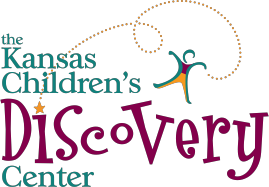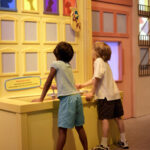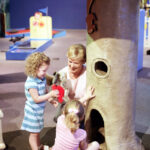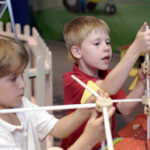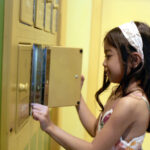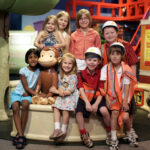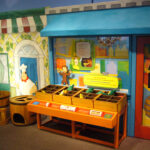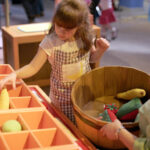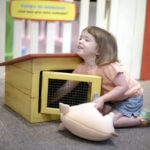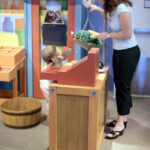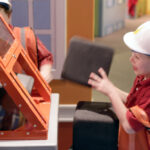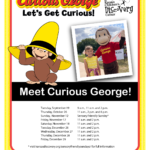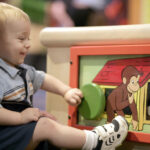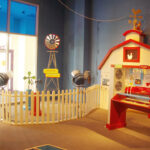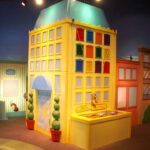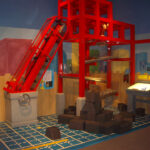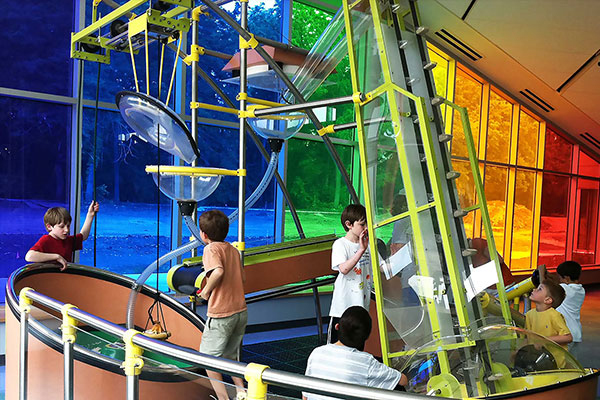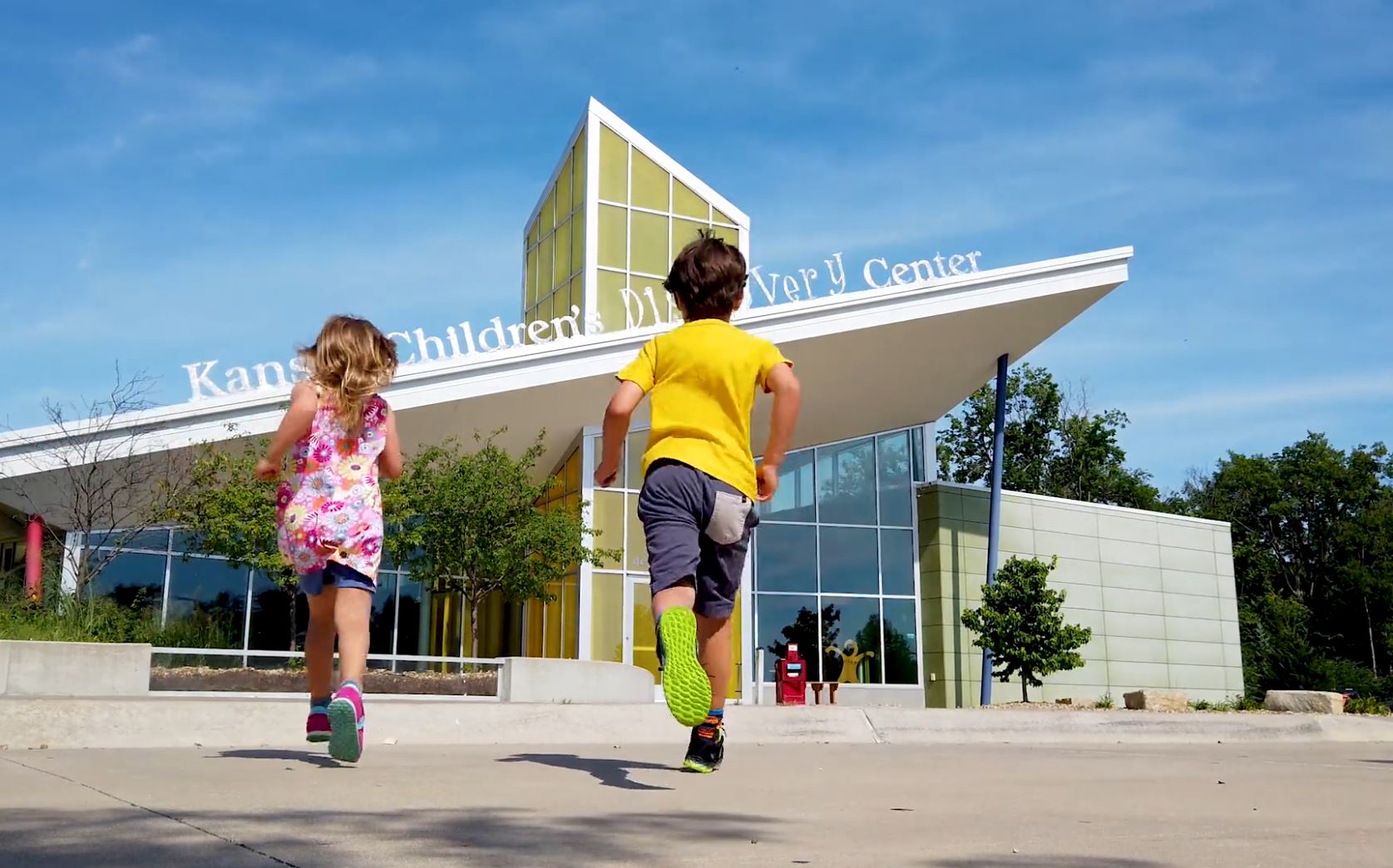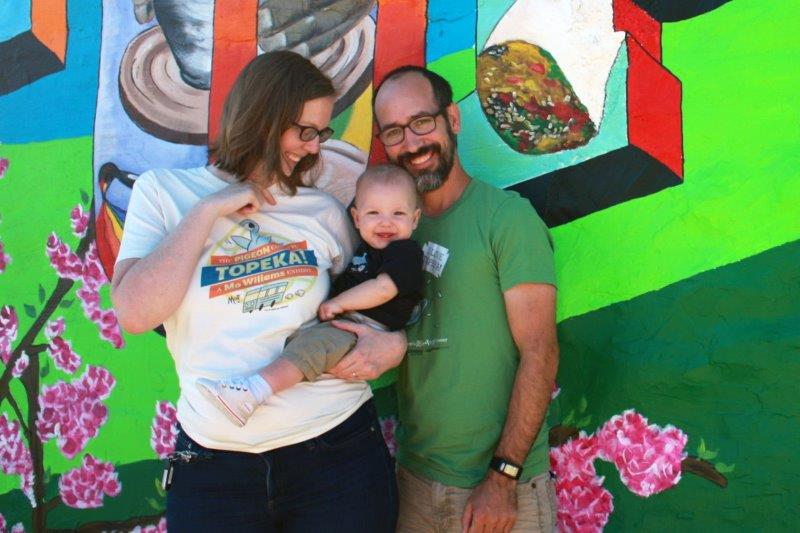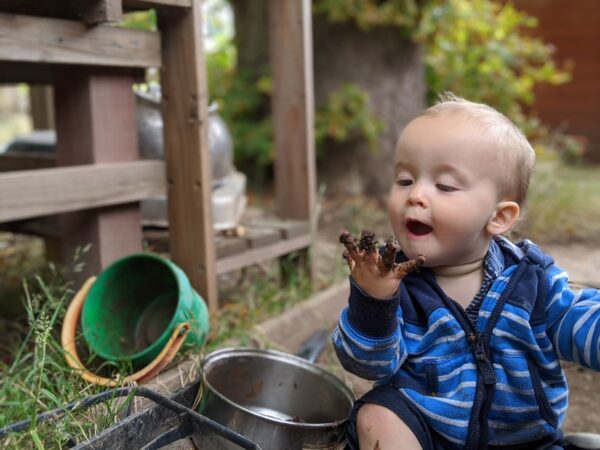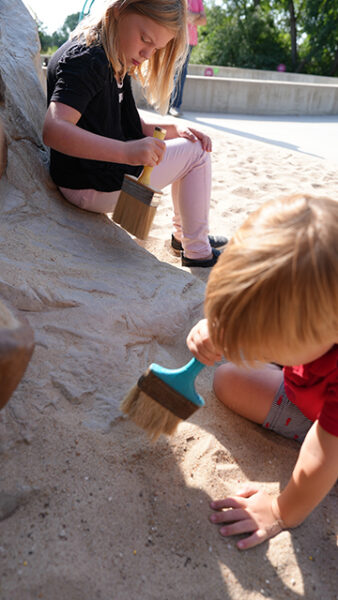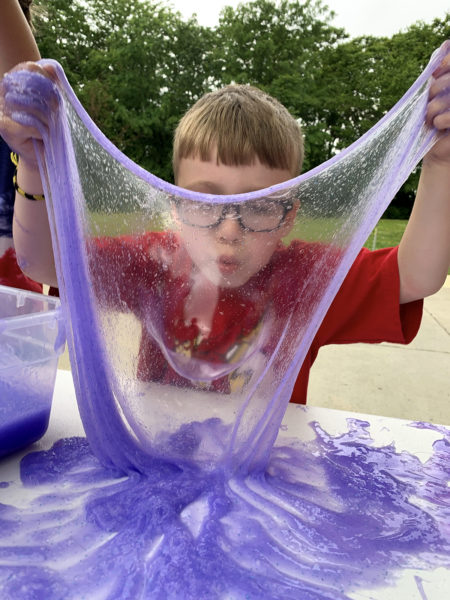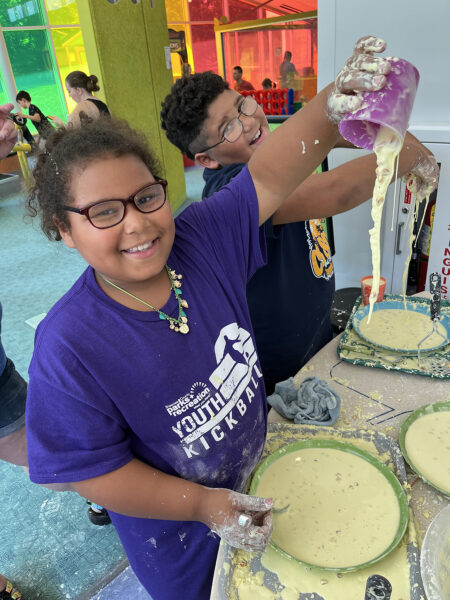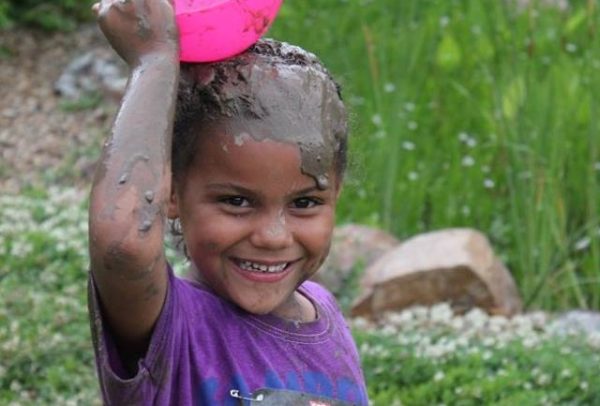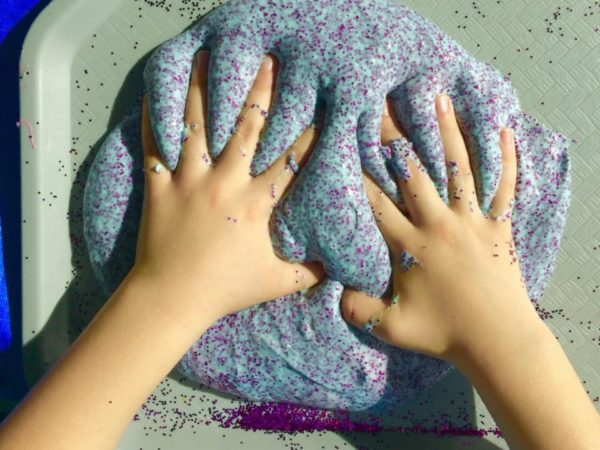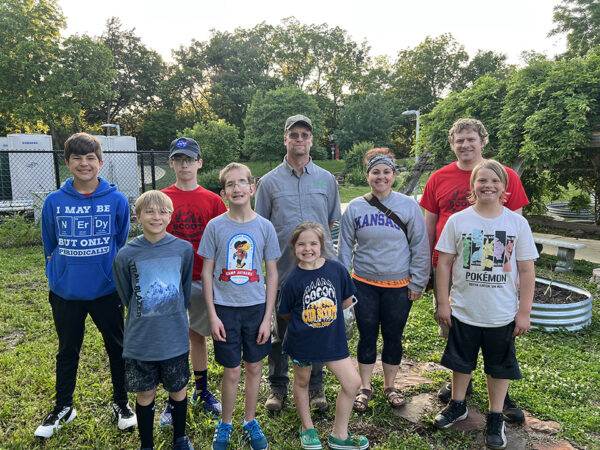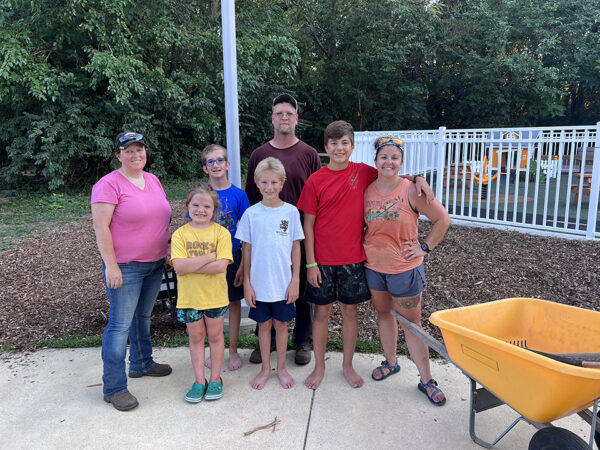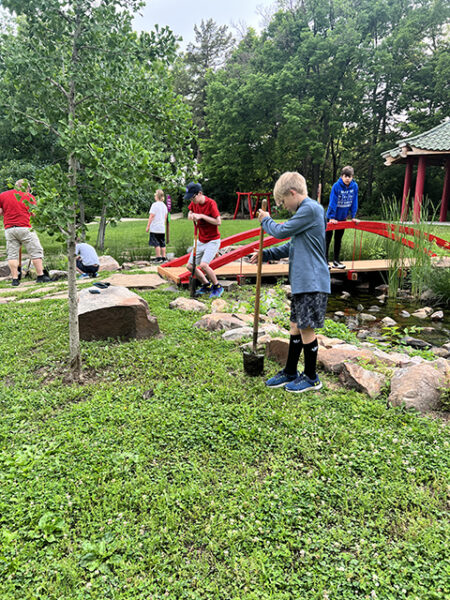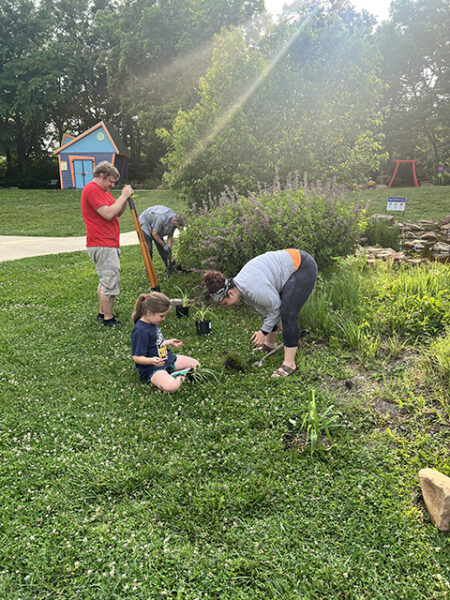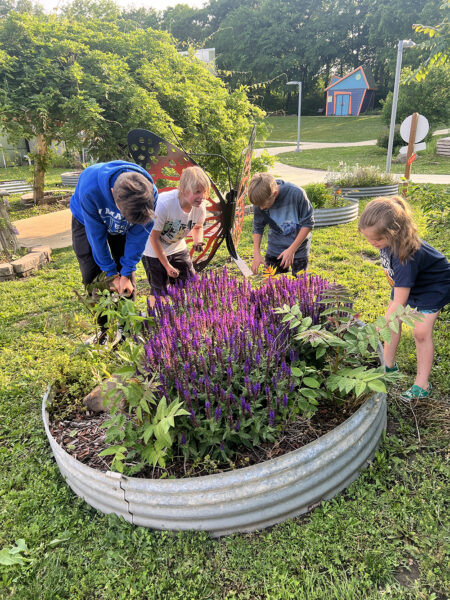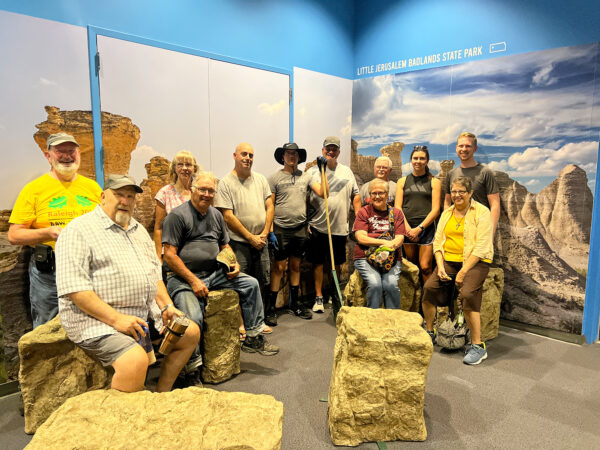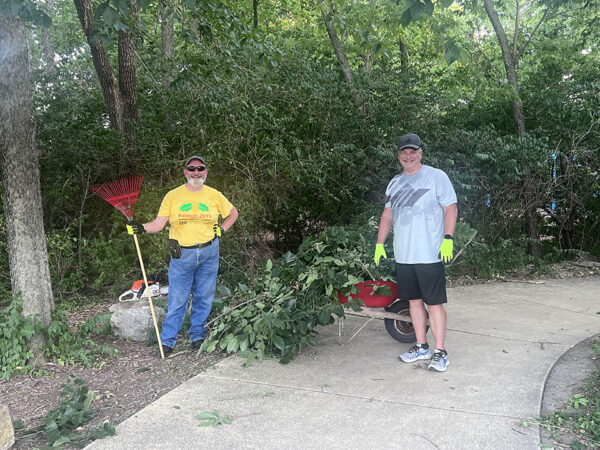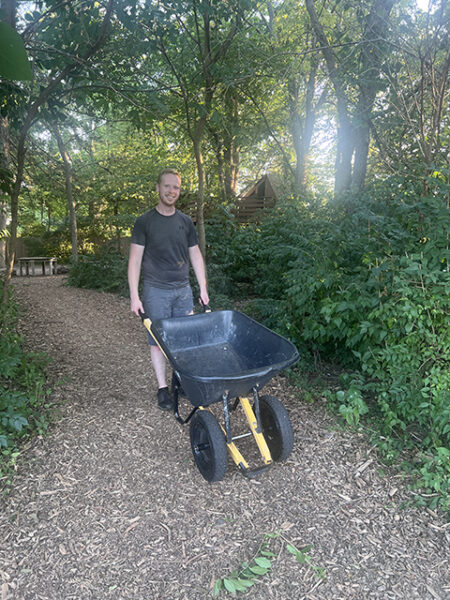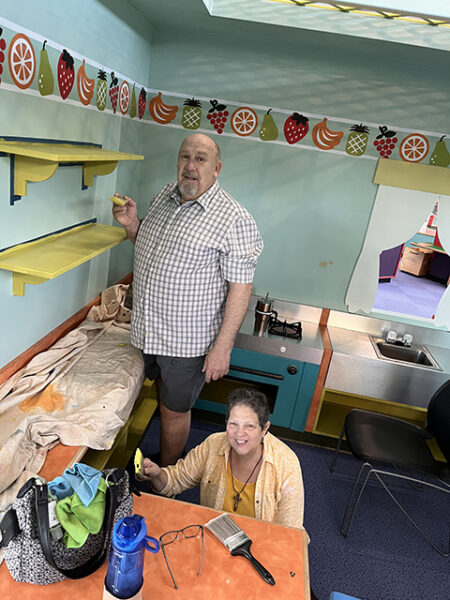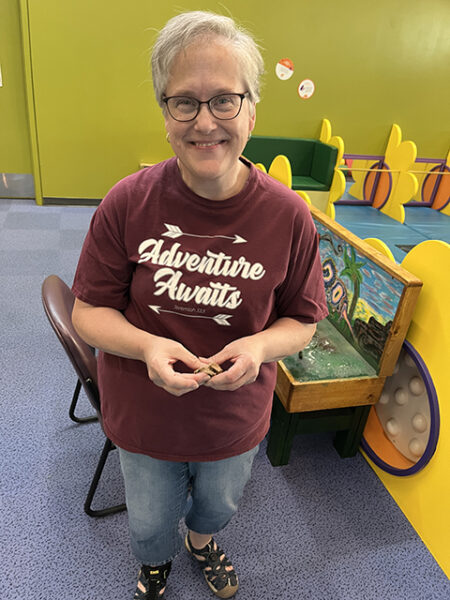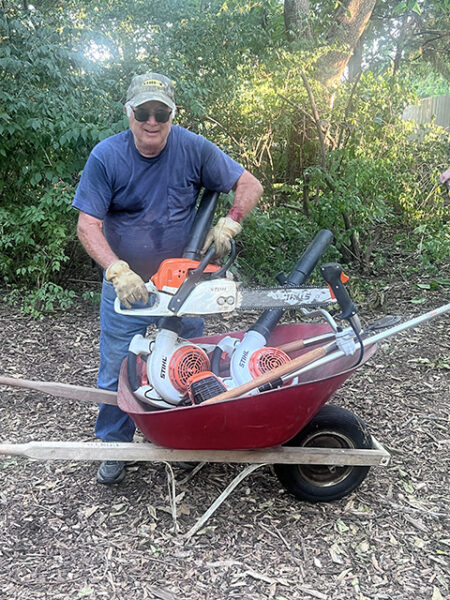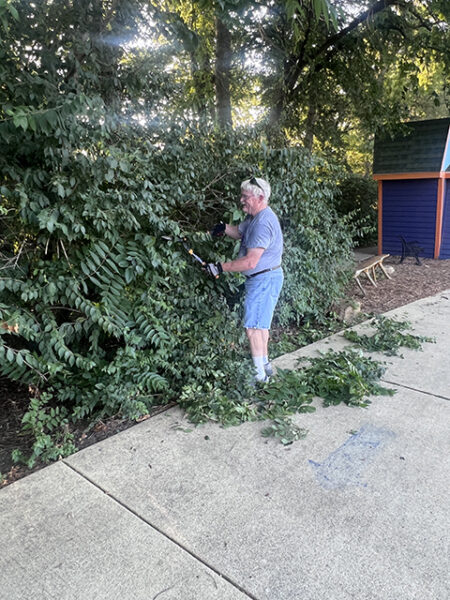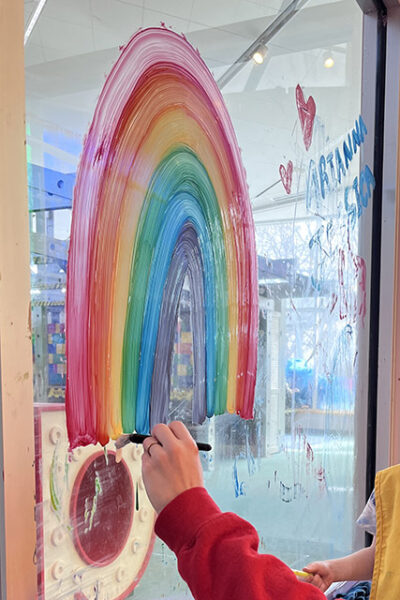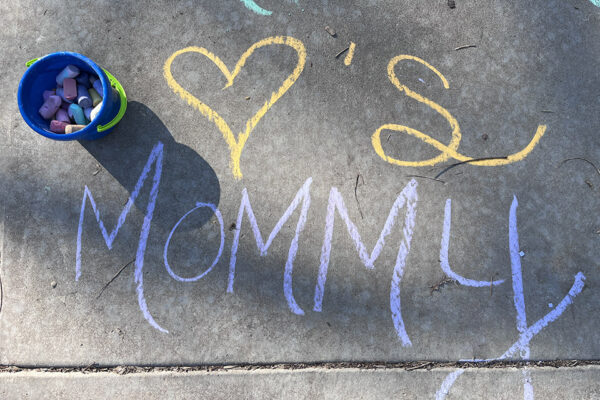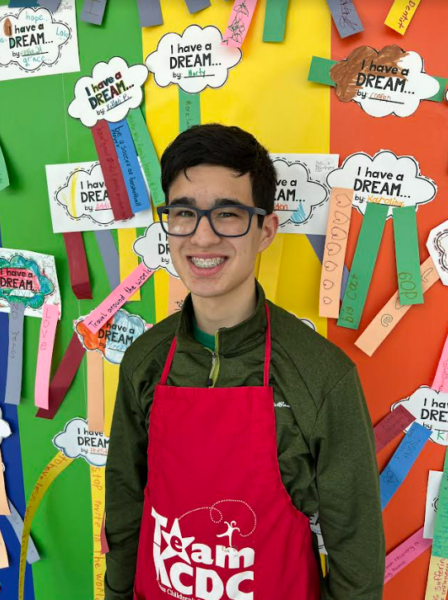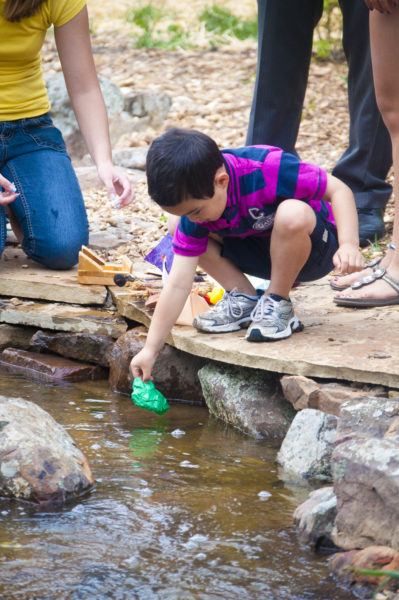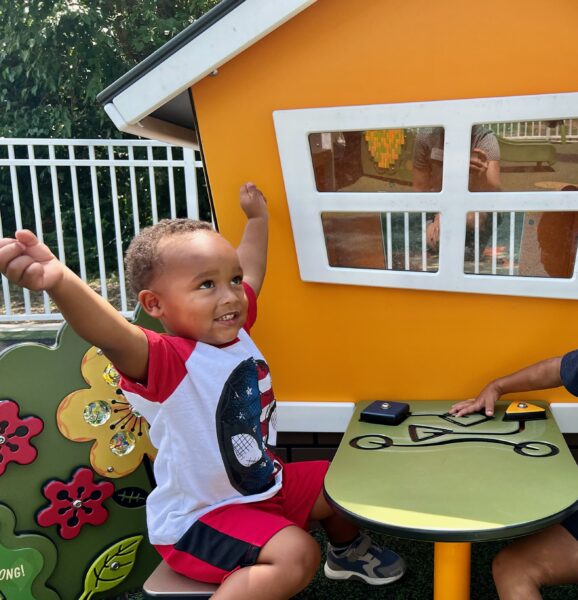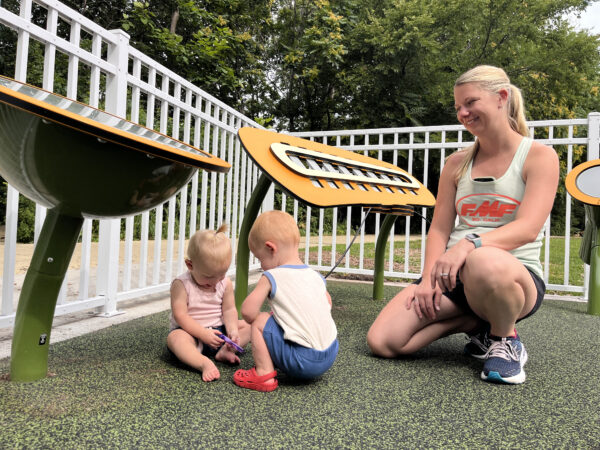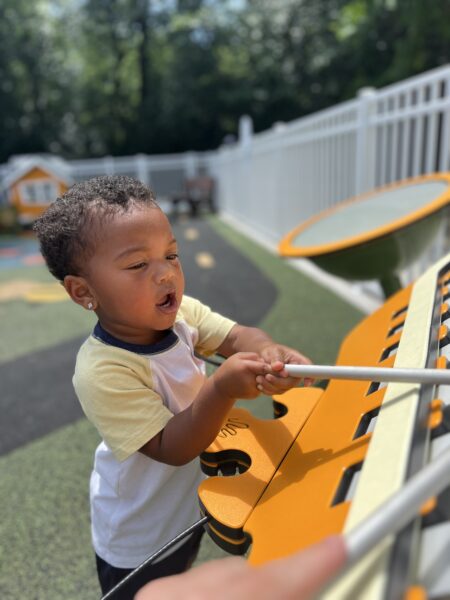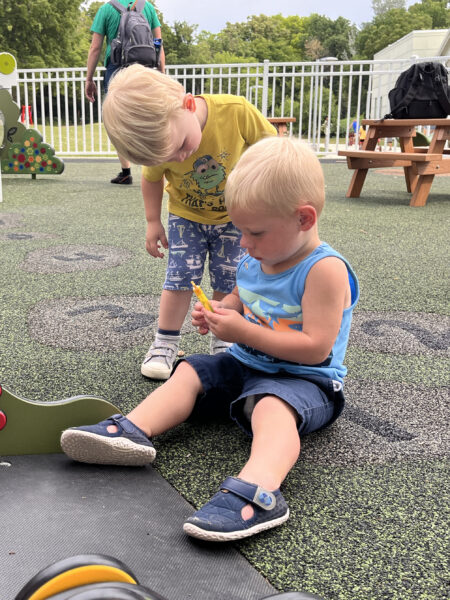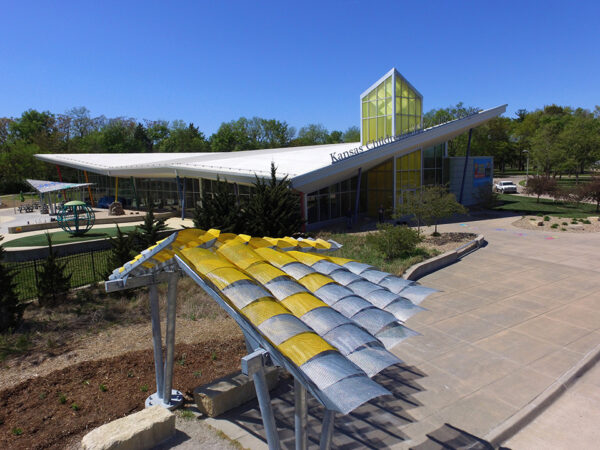This exhibit is now closed, stay tuned for more fun!
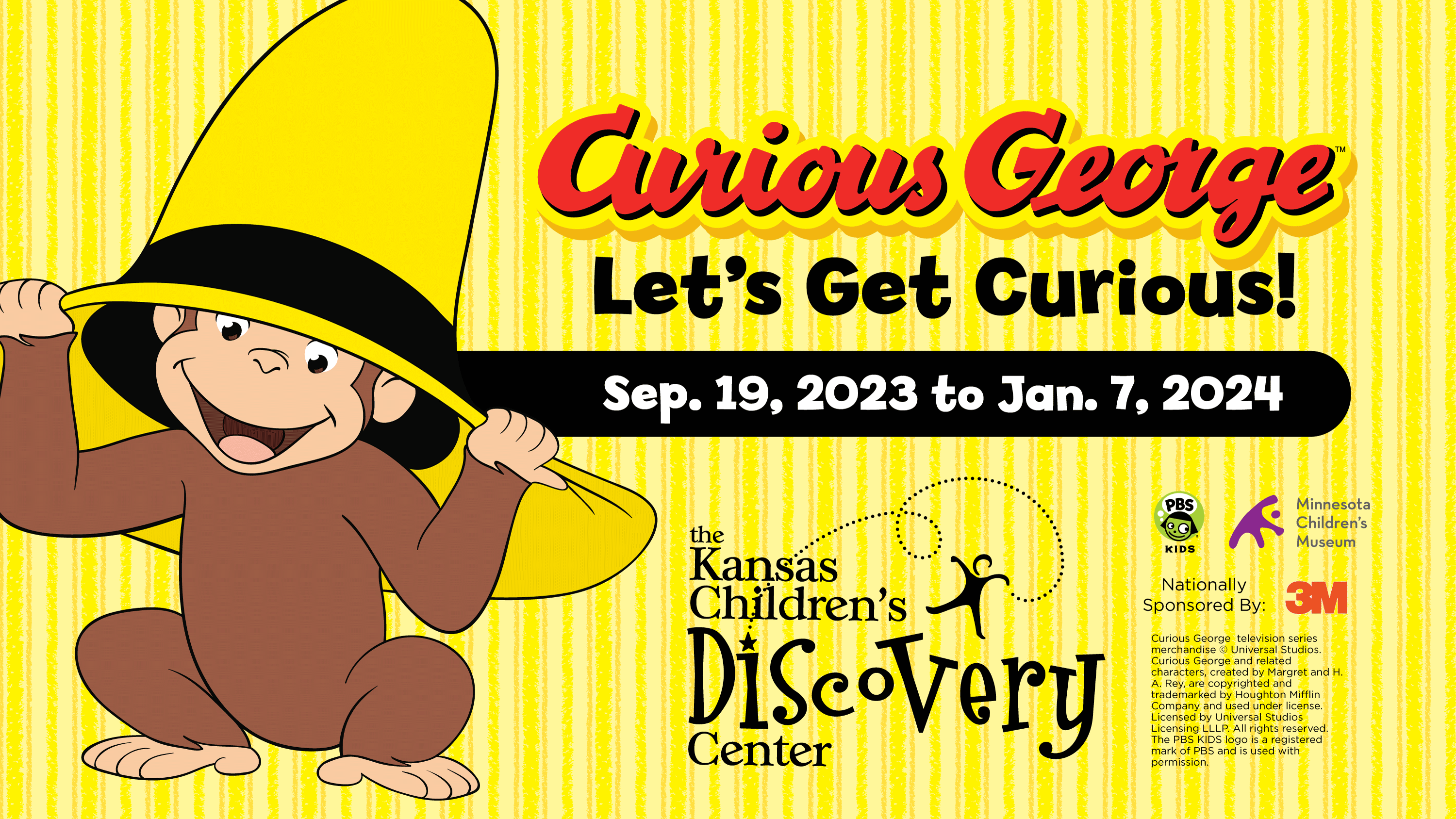
The insatiable curiosity of Curious George – the little monkey who has captured the imagination and hearts of millions of children and adults for 65 years – comes to life in the fall of 2023 in Topeka! The Kansas Children’s Discovery Center will present the nationally traveling “Curious George: Let’s Get Curious!” exhibit from September 19, 2023 to January 7, 2024. Created by the Minnesota Children’s Museum, the exhibit will introduce young children to Curious George’s world and lead visitors on a fun, meaningful interactive math, science and engineering-based adventure.
Based on the familiar characters in H.A. and Margret Rey’s stories, “Curious George: Let’s Get Curious!” inspires young children’s natural curiosity as they explore early science, math and engineering through hands-on interactive play. This exhibit will be included in the cost of regular admission.
The exhibit will also be open during monthly free nights on September 21, October 19, November 16, and December 15.
Curious George: Let’s Get Curious! Programs and Events
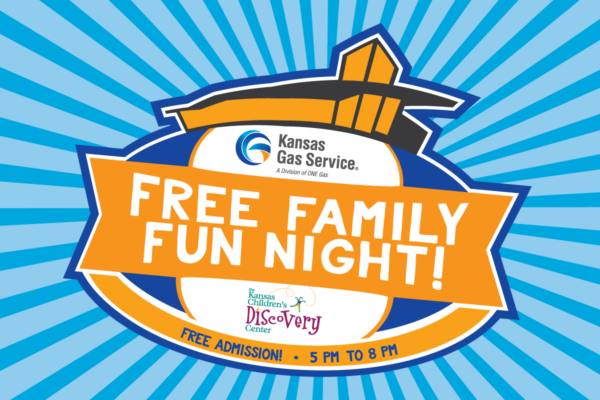
Join us for Kansas Gas Service Free Family Fun Night at the Kansas Children’s Discovery Center from 5 to 8 p.m. Thursday, November 21. Free admission generously sponsored by our partners at Kansas Gas Service for everyone, as capacity allows. Free weatherization kits to families who attend while supplies last!
Play with more than 15,000 square feet of indoor educational exhibits exploring science, careers, art, building and more, plus a 4.5-acre certified Nature Explore Outdoor Classroom.
Check out https://kansasdiscovery.org/freenights for a full schedule of free nights.
Curious George: Let’s Get Curious! is generously sponsored by
Plan Your Visit
What Else is Here?
What will you discover at the Kansas Children's Discovery Center?
Hours and Admission
Find out when you can visit and available discounts.
Plan Your Family Getaway in Top City
When you're in Topeka, affordable family fun is around every corner!
